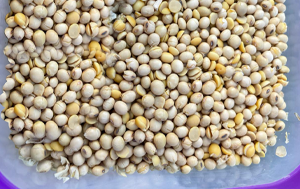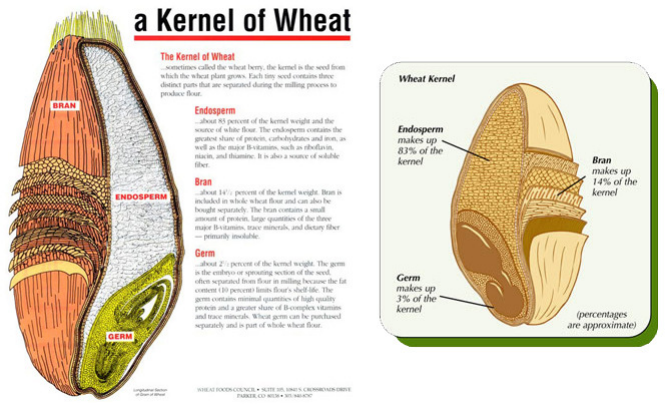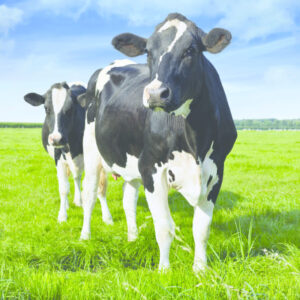Application in Animal Feeds

It is important that soya beans are properly heat treated before it is fed to animals. The reason for this is that raw soybeans contain an enzyme that is detrimental to digestion of protein.
Heat treatment also increases the amount of soy protein escaping microbial degradation in the rumen. This reduction of protein degradation occurs because of the Maillard type reactions between sugar aldehyde groups and free amino groups.”
The form of “Full-fat Soybeans” that Roastech’s roasters produce is optimal for milk production when broken in halves and quarters. Fine grinding of beans
causes oil release in the rumen, upsetting bacteria and decreasing fiber digestion. Fine grinding of soybeans in the summer also cause rancidity in the beans and also when added to ensiled forages or wet byproducts during warm months leading to animals refusing intake.
Dry heat from the roasting destroys toxin enzymes in raw soya which interfere with digestion and growth in all animals.
The soluble protein is decreased and the by-pass protein in increased
The protein degradability is slowed down so that more is utilized in the small intestine, known as by-pass protein.
High levels of by-pass protein are a very important ingredient to supplement soluble protein when feeding high levels of lucern or legume hay.
Roasted soya is high in Lysine, an important amino acid which is very tasty.
Retaining the 20% oil in the soybean during roasting is very important because it is a tremendous source of energy which provides 2.25% more energy than carbohydrates.
By roasting the soybeans, the oil is converted into a more digestible form.
Full-fat soya is thus an economical way to provide energy dense rations without increasing carbohydrates in the rumen – thus eat less with more value
Energy packed rations will increase butter-fat from 2 to 6 tenths of 1%
Milk production will increase 3-5#/hd/day
It helps maintain body weight on cows
It provides a prolonged peak milk production
Better breeding results from better feeding
The oil provides a slicker hair coat which improves overall herd appearance
Soy Lecithin remain which increases the speed of emulsification, stabilizes vitamins, is a natural source of choline and inositol.
Soy is a good source of phosphorus and has antioxidant properties to deter rancidity
Properly roasted Soya contains more ruminal un-degradable protein (bypass protein) and the urease and trypsin inhibitors are destroyed. If this is not done, the trypsin causes toxic reactions in most animals leading to various grades of diarrhea.
Studies showed that optimal heat treated soybeans resulted in a mean increase in milk production of 1.5kg per day
A 10% better feed conversion was obtained in lambs in extensive feedlot trails on roasted soya
Various studies have indicated that properly roasted soybeans are nutritionally superior to soybean meal in pigs.
An increase in the un-degradable intake protein from 25% to 60% takes place, thus the delivery of good quality protein to the animal’s digestive system.
When soybeans are processed through roasting, micronizing, flaking or extrusion, these processed soybeans effectively increase the conjugated linoleic acid (CLA) content in milk. Feeding raw soy beans has little or no effect on CLA.
Full-fat Soya has approximately 45±2% Protein and 28±2% Oil, compared to approximately 48±2% Protein and 6±1% Oil in oilcake meal. This is on a dry matter basis due to the extraction of the oil. (SunOpta Research)
Roastech has initially developed this technology specifically for whole soybeans. Tests have been done at the University of Free State, Eskom and private entities on several grains. They are very excited about the capabilities. Roasting of Soybeans is very successful because it eliminates the loss of proteins and vital fiber. The trypsin inhibitor has been destroyed to two
milligram per gram (2mg/g) and less if required. It deactivates urease activity to negligible levels.
Steam flaking is a process for cereal grains which causes gelatinization of the starch which results in an increased ruminal and total tract digestibility. Starch digestibility increases when processed by means of heat, moisture and pressure.
In practical terms:
Roasting destroys mould and reduces mycotoxins to tolerable levels. The process allows you to feed out-of-condition grains.
When Maize is roasted at high temperatures, there is a 10% increase in available energy.
Roasting ruptures the walls of the starch cells making the starch water-soluble. This is called gelatinization.
The gelatinization of starch makes it more digestible, thereby increasing the feed efficiency.
Reducing particle size of cereal grains by mechanical processing increases ruminal digestibility with specific advantage in starches with a lower ruminal digestibility such as maize, sorghum, barley and wheat.
By making the carbohydrate more available, more energy is released and more microbial protein can be produced.
In addition, heat treatment can change the chemical structure of the protein in maize, making it less likely to break down in the rumen.
Beef cattle revealed an 8.1% better gain and consumed 9.7% less feed on roasted maize because it is more digestible in the rumen.
Whole kernel passage of raw maize is 14% compared to only 2% for roasted maize.
Mold has extremely harmful effects on the health of pigs, thus eliminating any level of mold, whether visible with the naked eye or not, eliminates tail biting and restlessness.
For breeding stock, mold can cause sterility and mold may cause 60% to 70% drop in gain for growers.
According to tests, feeding roasted soybeans and roasted maize in rations, gives swine producers 9% faster gains and requires 9% less feed.
Trails on lambs showed 11% faster gain in the early stages when fed roasted maize versus raw maize.
Lambs fed on pellets containing roasted maize required 10% less feed per kilogram of weight gain than lambs fed on pellets containing raw maize.
It increases the sites for microbial attachment resulting in improved starch (carbohydrates) digestion
Ruminal digestibility of flaked maize is (according to various sources) 10% higher than fine maize and 32% higher than coarsely ground maize

Feeding certain raw grains to horses is associated with some risk. In the raw state some cereals and seeds contain an inaccessible starch structure which is indigestible by the horse. The danger in feeding these grains to horses lies in the risk of incomplete digestion of the starch portion of the grain (60 – 80% of the grain weight) in the small intestine where it should be digested by enzymatic breakdown, absorbed as simple sugars into the bloodstream and distributed to where they maybe needed by the body for energy or stored as muscle glycogen or adipose tissue for future use.

This means that one of the goals of feeding high starch (energy) diets to horses lie in maximizing the grains digestibility in the small intestine. This is achieved by opening up the starch molecules within the grains and breaking them up into smaller components in a modified structure, making them more accessible to enzymatic absorption.
The aim of feed processing is to change the physical and or chemical form of the raw cereal starch structure resulting in greater feed availability. Roasting is a patented and advanced processing technique which uses forced convection of heated air as a source of energy.
Pre-cleaned cereals are soaked until they reach 18-20% moisture content. Starch which is insoluble in water can absorb relatively large amounts of liquid. This causes the starch granules to swell prior to treatment. This process is reversible in the absence of adequate heat.
- The preconditioned cereals are cooked at approximately 165Celsius causing a rapid rise in internal water vapor pressure forcing apart irreversibly the hydrogen bonds within the starch granules.
- This process causes the grain to become soft and turgid (plasticized), swell, fracture and gelatinize. Immediate flaking, using a heavy duty mechanical flaking mill, creates a stretching action in the grain which causes further physical and chemical changes in the starch structure thus completing the gelatinization process considerably enhancing the grains digestibility and feed value.
- Roasting converts the starches to sugars and the process greatly enhances palatability and flavor of the grain. The final product has an appealing and attractive appearance, is dust free, with good color retention of the natural grain.
- Many vegetable protein sources in the raw state contain toxic enzymes (example soya and linseed) and other anti nutritional factors which obstruct digestion. Roasting is one of the most efficient and economical answers to consistent eradication of these toxic enzymes without loss of lysine or other heat sensitive amino acids. A very agreeable toasted nutty flavor which is very palatable, replaces the stringency associated with some of these grains, whilst maintaining the beneficial high energy oil level in the final product with excellent shelf life, as well, due to lipoxygenase inactivation which occurs during the micronizing process.
- Increased digestibility makes feeding roasted products more efficient and should lead to increased weight gain and reduced total grain intake.
- Roasted grains have a long and extended shelf life.
Roasting ensures a more rapid rate of starch digestion. As high digestibility is directly related to the rate of glucose released (energy) this leads to good efficiency and performance giving optimum starch, protein and amino acid digestibility.
- The roasting process guarantees high digestibility. Work on starch has shown: The digestibility of barley increases from 32% to 98%, that of wheat from 28% to 90% and Maize from 43% to somewhere around 90%

- Carbohydrates: corn, sorghum, other grains
- Proteins: soybean meal, meat products, amino acids (methionine, lysine)
- Fats: corn oil, blended fat products
- Minerals: salt, limestone, calcium carbonate, calcium, phosphate, trace mineral mix
- Vitamins: vitamin mix, other
These ingredients are mixed in different proportions
